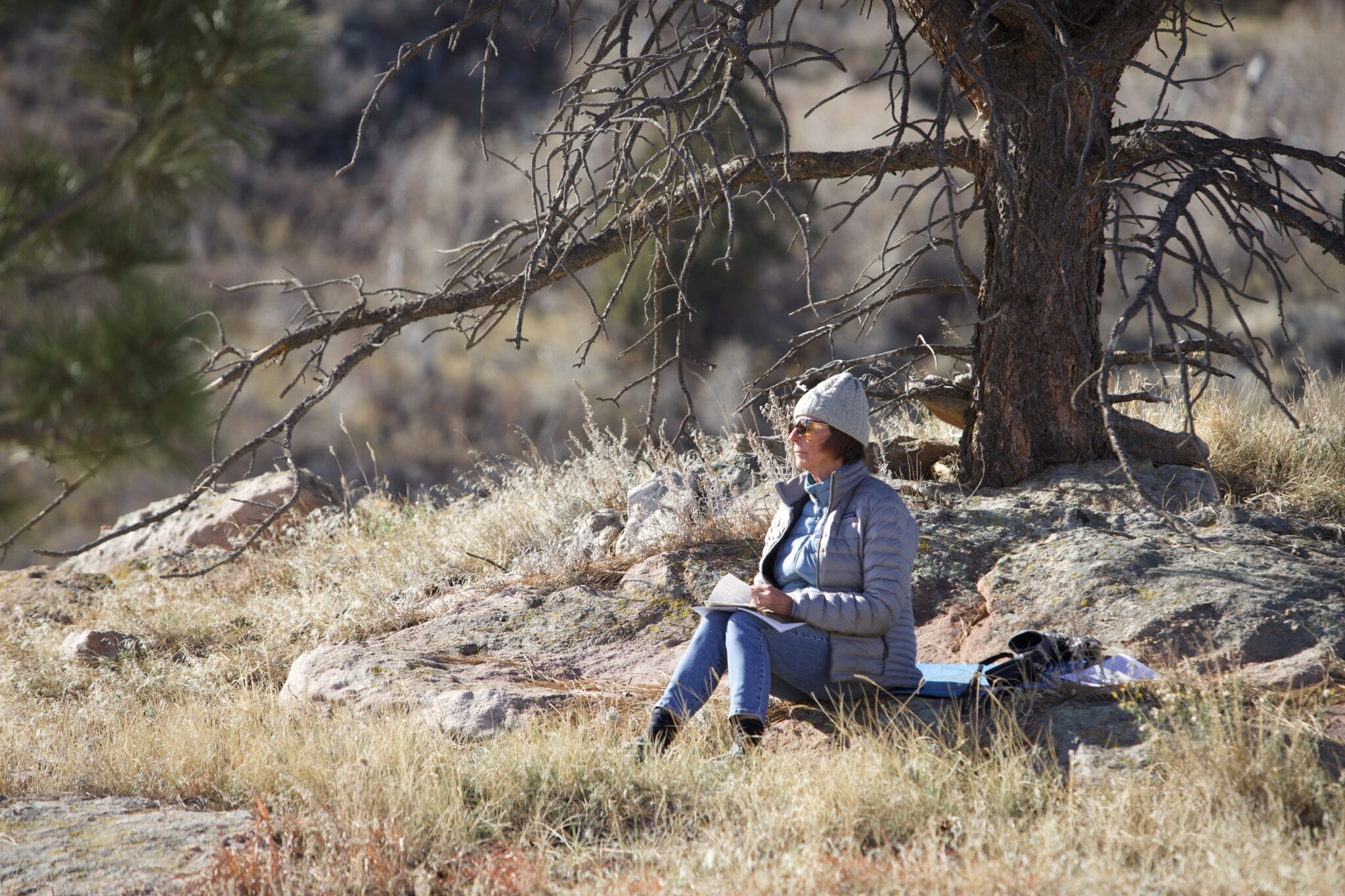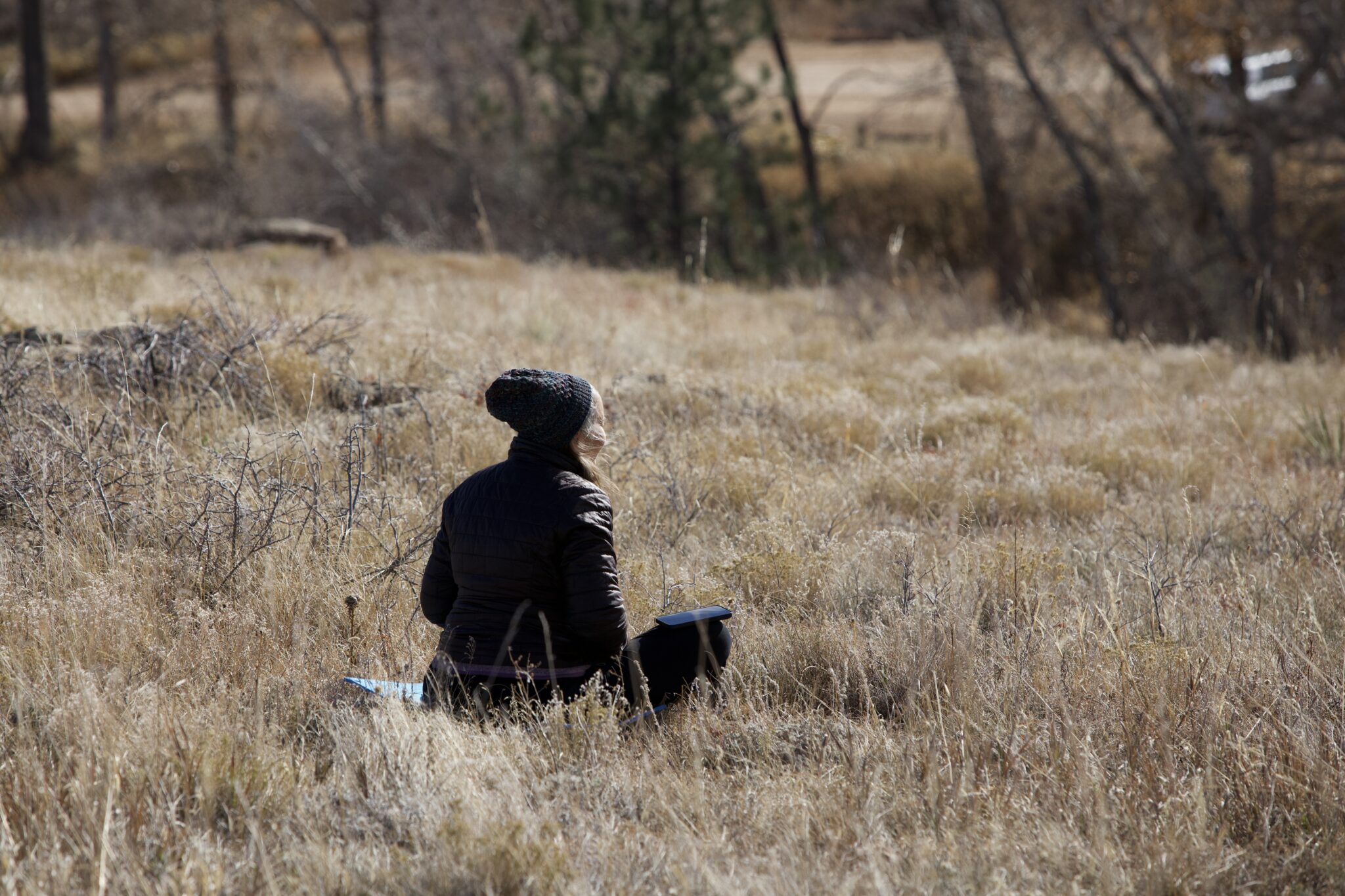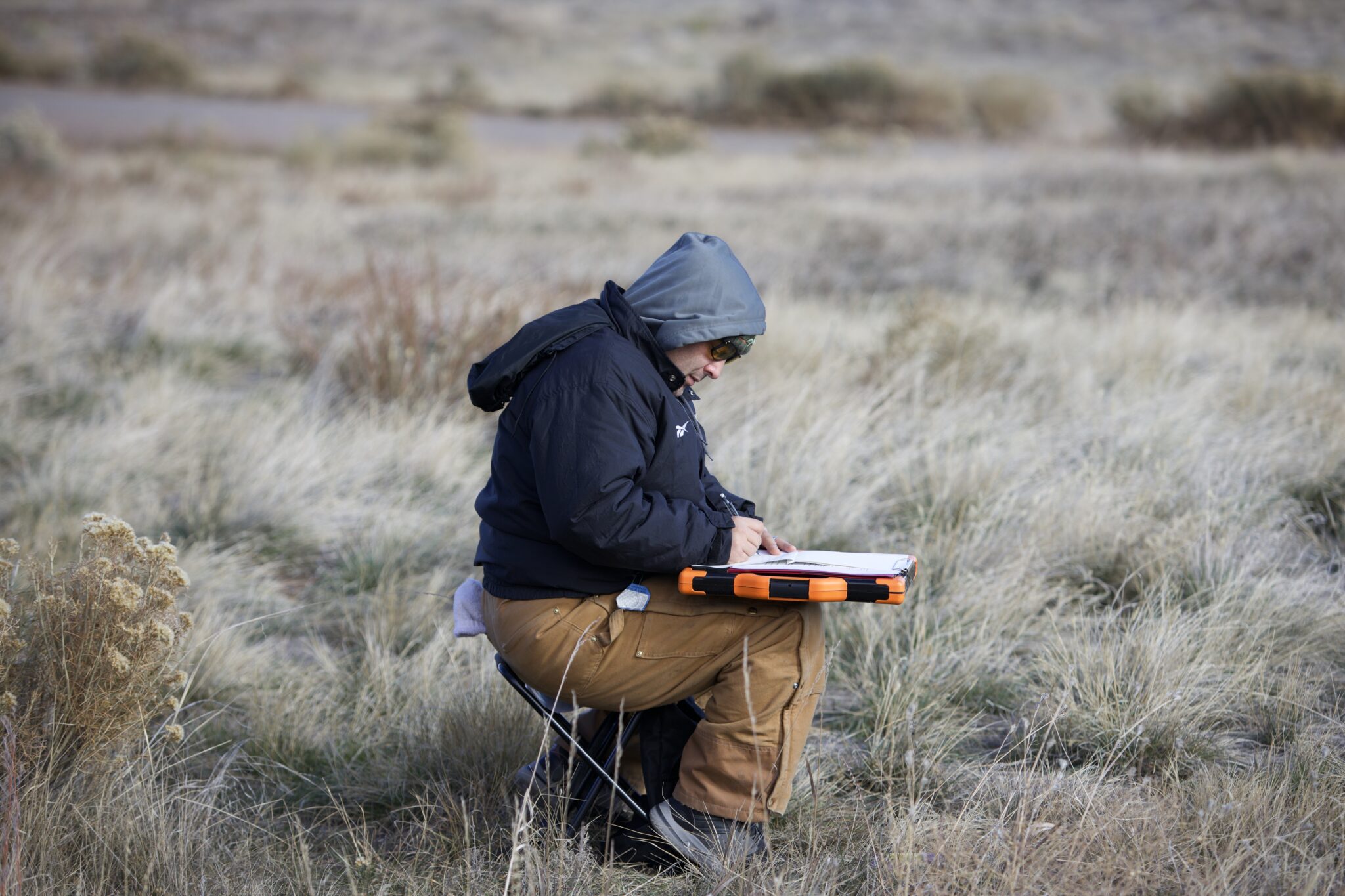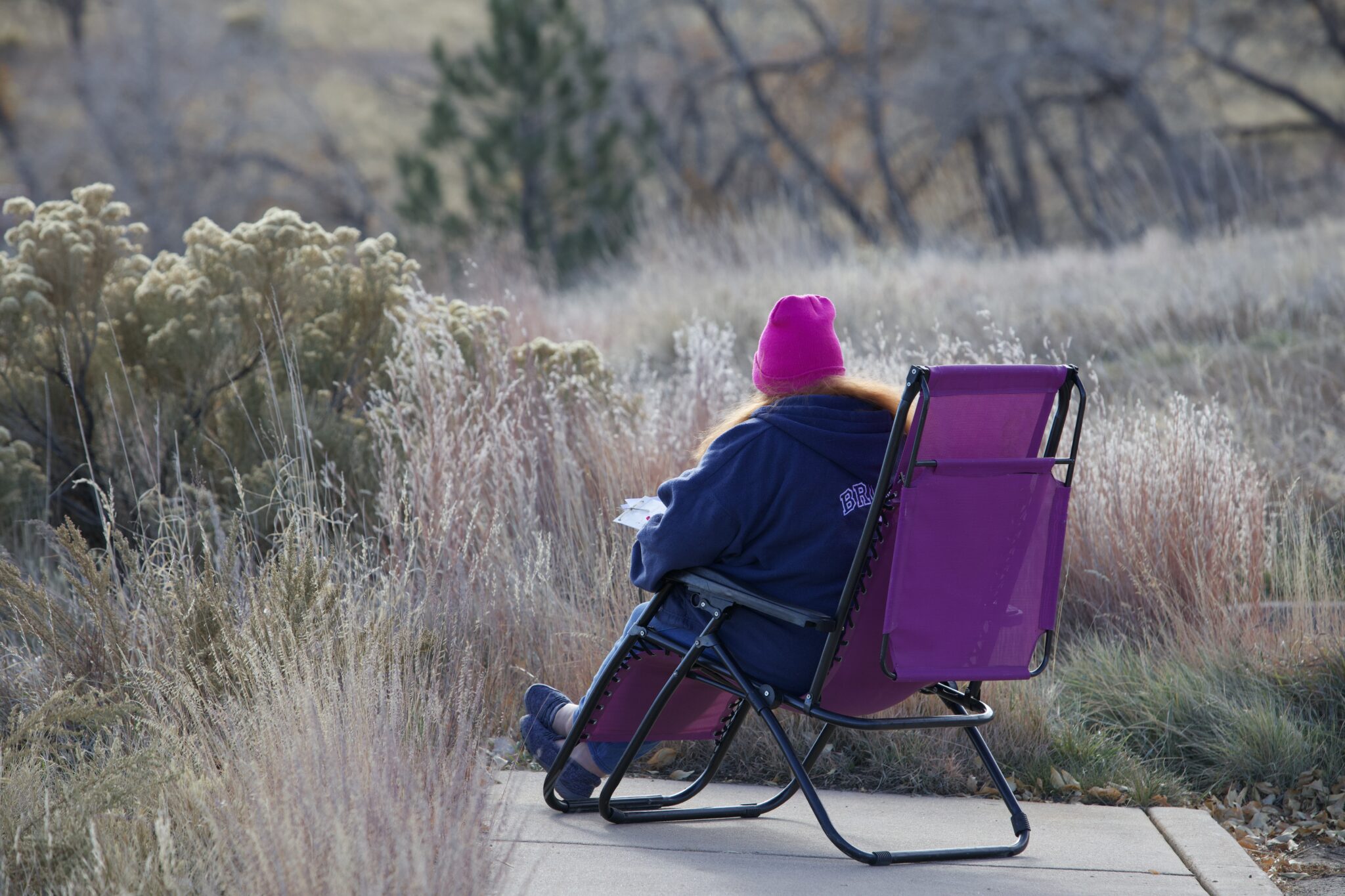“Due to our innate connection with nature, mindful birding is undoubtedly a tonic and a source of peace for our modern heart. For our ancestors, however, having an in-depth awareness and understanding of birds was vital because it informed them of happenings in the wilderness.”
-The Art of Mindful Birdwatching by Claire Thompson
Mindful birding is a powerful practice that combines the joys of birdwatching with the benefits of mindfulness. Exposure to nature is linked to a host of benefits, including improved attention, lower stress, better mood, reduced risk of psychiatric disorders, and even an increase in empathy and cooperation. By cultivating non-judgmental awareness and deep listening, we can learn to appreciate the beauty of the natural world and find greater peace and well-being in our daily lives.
Mindful birding is an inclusive practice for all abilities, all ages, and all needs. It is naturally a comfortable and welcoming environment for underrepresented individuals as well as participants that have physical and mental challenges, and those with special learning needs. There is no level of competition or level of experience expected. Using accessibility guidelines from the organization Birdability, we can select user-friendly trails, advertise, welcome, and lead an enjoyable outing. We define a birder as anyone who enjoys birds.
- You begin to notice much more when you take the time to sit and listen in one location.
- A mindful birder enjoying the sounds of nature.
Two methods that are often connected to mindful birding are sit spots and bird language. The sit spot is an exercise you can practice daily in a backyard, a wooded place near where you live or work, or even in your kitchen window. Try to take time out of each day to do this. The more often you can visit the place you have chosen, the more you will see. Once you find a place that you are comfortable with, relax by taking some deep breaths. Pay attention to all your senses. What do you hear? What smells do you notice? What are the plants in your view? Are they flowering, are there any seeds or nuts? You may flush a bird when you get there, but watch to see if it returns and settles back in as it realizes that you are not a threat. Start with what we call the ‘usual suspects or common birds. What is it doing? Why is it doing that? What sound does it make? Bring a journal and jot down the questions you have, any observations you make, or make a sketch of the bird. As you start to notice more details your sit spot becomes a story and you become a part of it.
The second practice, bird language, is still part of the culture of many native communities, such as the San Bushmen of the Kalahari Desert and some Amazon rainforest communities. In our modern lives, however, most of us do not need to read the language of our winged companions to survive, but we can still gain great pleasure and insights from tuning into their conversations (Thompson, 2017). Bird language is their expression of what they are experiencing. They talk to each other, and they discuss everything and everyone. (Think House Finch). In bird language, there are five calls, and four of these calls are considered baseline behavior or a state of harmony. This means the bird is relaxed, going about their normal routine and conserving energy. Keep in mind, a Black-capped Chickadee, weighing in at about two nickels, cannot afford to use any extra calories. The fifth call is an alarm call and is essential to the survival of the bird. These calls tell you what is going on at your sit spot. For example, if a Cooper’s Hawk appears, a small prey bird will alarm to warn others of the threat. The next thing you may hear is quiet as the alarm turns into a “pillow of silence” to not give off the location of the nest. My favorite call, and the easiest to learn, is the companion call. Two birds in the backyard: Hi. Hi. Hi. Hi. How are you? … silence. How are You?! Just checking in with each other, just like we do.
- You can also take the time to record your findings, feelings and questions in a nature journal.
- Finding a comfortable spot to sit will allow you to spend more time soaking in nature
Mindful birding can help us to develop a deeper appreciation for the importance of conservation and stewardship. By observing the birds and their behavior, we can begin to understand their role in the larger ecosystem and how human actions can impact their habitats and survival. If we share this passion with people from all walks of life, we can create a more diverse and equitable birding community that reflects the beauty and diversity of nature. Our well-being and the well-being of future generations depend on restoring our connection to nature and our understanding that we are all part of an interconnected web of life (Thompson, 2017).
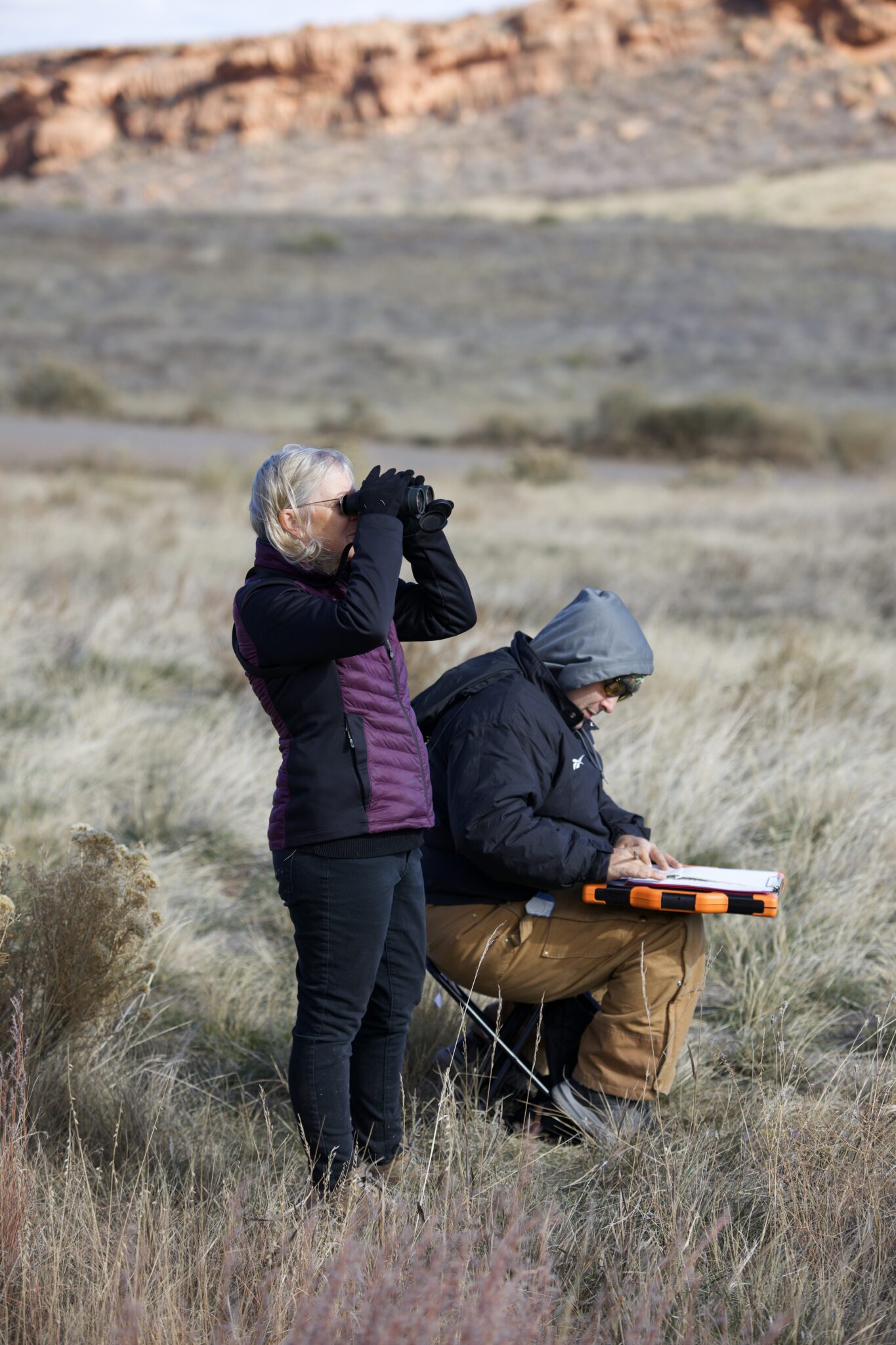
The author Barb Patterson looking for birds during a mindful birding event.
The mindful birding program in Fort Collins took flight after Deanna Krause took the Mindfulness-Based Stress Reduction (MBSR) class with Ann-Marie Bowman, an oncology counselor and meditation guide at the UC Health Harmony Cancer Center in Fort Collins, Colorado. MBSR is a meditation program developed by Dr. Jon Kabat-Zinn professor emeritus at the University of Massachusetts Medical School in 1979. He studied patients suffering from pain who were not responding well to traditional treatments but found relief from mindfulness practices. When Deanna discovered the comfort and healing of applying these principles to birding, she shared her passion with others. She launched a pilot Mindful Birding Project for cancer patients undergoing chemotherapy. The pilot project included educational materials on cancer, mindfulness, and birding. A booklet on mindful birding was printed with the financial support of the Fort Collins Rotary Club and the creativity of Dr. Barbara Patterson, a natural resources professor at Front Range Community College. A second grant expanded the project to five other hospitals in northern Colorado. Sherry Nickolaus, Education Director of Bird Conservancy of the Rockies is starting the project at the Platte Valley Hospital in Brighton.
The culmination of this enthusiasm is an event celebrating nature’s healing modality and birding on June 10 at Sylvan Dale Ranch. This event is in partnership with Soul Agency, Fort Collins Audubon Society, Bird Conservancy of the Rockies, Hope Lives, Swarovski Optik, and the Heart-J Center for Experiential Learning. We invite you to a day of healing in nature for cancer survivors, caregivers, and healthcare workers. The morning program will be a talk on mindful birding by Dr. Barbara Patterson, and a nature immersion bird walk at the ranch led by volunteers. Thanks to the generosity of our community, mindful birding toolkits and booklets will be provided free of charge. The afternoon is a barbecue and keynote speaker. Join us as Florence Williams, bestselling author of The Nature Fix, discusses the science at the confluence of environment, mood, health, and creativity. Delving into completely new research, she uncovers the power of the natural world to improve health, promote reflection and innovation, and ultimately strengthen our relationships.
To learn more about events and resources on mindful birding, check out the The Mindful Birding Network started by Holly Merker, the author of Ornitherapy.
CLICK HERE to register for The Nature Fix event.
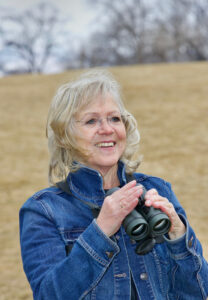 Barb Patterson, among many other things is an On Call Educator for Bird Conservancy.
Barb Patterson, among many other things is an On Call Educator for Bird Conservancy.
All photos by: Jim Rae


